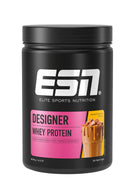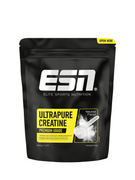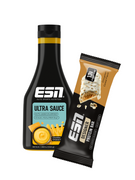Welche Muskeln befinden sich im Rücken?

Für einen gesunden Rücken spielen verschiedene Muskeln eine wichtige Rolle:
- Trapezmuskel (Musculus trapezius)
- Deltamuskel (Musculus deltoideus)
- Breiter Rückenmuskel (Musculus latissimus dorsi)
- Autochthone Rückenmuskulatur (Rückenstrecker / Musculus erector spinae)
- Quadratischer Lendenmuskel (Musculus quadratur lumborum)
Zu einem gesunden Rücken tragen nicht ausschließlich die Rückenmuskeln selbst bei. Denn auch Muskeln mit einer Verbindung zum Rücken können an der Stabilität des Rückens oder aber an Rückenschmerzen beteiligt sein. Daher ist es für das Training und als vorbeugende Maßnahme gegen Rückenschmerzen wichtig, die gesamte Rückenmuskulatur ausreichend zu dehnen.
Schauen wir uns die einzelnen Rückenmuskeln im Detail an: Der Trapezmuskel sitzt an der oberen Wirbelsäule. Er ist an der Bewegung der Schulterblätter, der Drehung des Kopfes und der Streckung der Halswirbelsäule beteiligt. Der Deltamuskel umspannt die Schulter. Er hält den Oberarmknochen-Kopf in der Gelenkpfanne und hilft beim Heben des Oberarms.
Der breite Rückenmuskel ist umgangssprachlich auch als Latissimus bekannt. Die große Muskelgruppe deckt die Wirbelsäule fast auf ganzer Länge unter dem Schulterblatt ab. Der Latissimus stabilisiert die Wirbelsäule und hilft bei Seitwärtsbewegungen des Rumpfes. Außerdem ermöglicht er das Anziehen der Arme an den Körper und die Bewegung der Arme auf den Rücken.
Die autochthone Rückenmuskulatur wird auch Rückenstrecker genannt. Sie verläuft auf beiden Seiten entlang der Wirbelsäule vom Becken bis zum Kopf. Die Muskelgruppe richtet die Wirbelsäule auf und stabilisiert sie.
Der quadratische Lendenmuskel ist ein tiefer Bauchmuskel. Er ist an der Seitwärtsneigung des Rumpfes, der Streckung der Lendenwirbelsäule, der seitlichen Beckenhebung und dem Ausatmen beteiligt.
Übungen für den Aufbau der unteren Rückenmuskulatur
Mit diesen Übungen kannst du im unteren Rücken den Muskelaufbau trainieren:
- Rückenstrecken
- Kreuzheben
- Beckenheben mit Kurzhanteln
Rückenstrecken

Beim Rückenstrecken, auch Hyperextensions genannt, werden der Rückenstrecker (Musculus erector spinae), die Muskeln im Gesäß und der Beinbizeps trainiert. Als Rückenübung zum Muskelaufbau sollten acht Wiederholungen und zwei bis vier Sätze durchgeführt werden. Bei fortgeschrittenem Training kannst du den Schwierigkeitsgrad durch ein Gewicht intensivieren, das du vor der Brust hältst.
So führst du das Rückenstrecken korrekt aus:
- Begib dich in gerader Körperhaltung auf das Gerät.
- Beuge den Oberkörper bei angespanntem Bauch langsam nach unten, bis er im rechten Winkel zu deinen Beinen
- Bewege dich wieder langsam nach oben, bis dein Oberkörper wieder gerade ausgerichtet ist.
- Achte darauf, zwischen den Wiederholungen die Spannung in den Zielmuskeln zu halten.
Häufige Fehler:
- Hohlkreuz: Achte darauf, deinen unteren Rücken nicht zu überstrecken.
- Keine gerade Kopfstellung: Dein Kopf sollte in gerader Verlängerung deiner Wirbelsäule gehalten werden.
- Mit Schwung aufrichten: Das Rückenstrecken sollte langsam und kontrolliert durchgeführt werden. Richtest du dich mit Schwung auf, geht die Spannung und damit der Trainingseffekt in den Zielmuskeln
Kreuzheben

Beim Kreuzheben oder Deadlifting werden der Rückenstrecker (Musculus erector spinae), die Oberschenkelmuskeln und der große Gesäßmuskel trainiert. Die Anzahl an Übungs-Sätzen und Übungs-Wiederholungen pro Satz sollte an die individuelle Erfahrung und die Trainingsziele angepasst werden. Anfänger mit bis zu einem Jahr Erfahrung sollten bei einem niedrigeren Schwierigkeitsgrad einsteigen. So können zwischen vier und sechs (Männer) beziehungsweise zwischen acht und zehn (Frauen) Wiederholungen durchgeführt werden.
So führst du das Kreuzheben korrekt aus:
- Stelle dich etwa schulterbreit vor die Langhantel. Spanne den Bauch an, strecke die Brust raus und halte den Rücken gerade.
- Beuge die Knie und umfasse die Stange schulterbreit. Umgreife die Stange dabei fest entweder im Untergriff oder mit einer Hand im Untergriff und einer im Obergriff (Kreuzgriff).
- Beim Aufrichten führst du die Hantel nah am Körper Richte deinen Blick auf einen Fixpunkt vor dir. Die Bewegung besteht gleichzeitig aus dem Strecken der Beine und aus dem Aufrichten des Rückens. Atme beim Aufrichten aus.
- Ziehe in aufrechter Haltung die Schultern zurück und strecke die Hüfte leicht vor.
- Zum Absetzen schiebst du die Schulter wieder vor und die Hüfte in die Ausgangsposition. Atme beim Absetzen der Langhantel aus.
Häufige Fehler:
- Zu viel Gewicht mit Schwung heben: Durch eine falsche Ausführung und zu viel Gewicht schadest du deinem Körper.
- Rücken krümmen: Führe die Übung langsam und gleichmäßig mit geradem Rücken Bei einer falschen Rücken-Haltung besteht große Verletzungsgefahr beim Kreuzheben. Richte außerdem deinen Blick auf einen Fixpunkt vor dir. Eine aufrechte Kopfhaltung hilft, den Rücken beim Kreuzheben gerade zu halten.
Beckenheben mit Gewicht

Das Beckenheben mit Gewicht ist auch als Glute Bridge bekannt. Bei der Übung werden der Rückenstrecker (Musculus erector spinae), der große Gesäßmuskel und der Beinbizeps trainiert. Das Beckenheben kann mit drei Sätzen von jeweils acht bis zehn Wiederholungen durchgeführt werden. Als Anfänger kannst du die Übung auch erstmal ohne Gewicht durchführen.
So führst du das Beckenheben korrekt aus:
- Lege dich auf den Boden und stelle deine Beine hüftbreit flach vor dir auf. Die Knie sollten so angewinkelt sein, dass beim Heben der Hüfte ein rechter Winkel zwischen Oberschenkel und Unterschenkel entsteht.
- Fixiere das Gewicht etwa auf Höhe deiner Hüfte.
- Beim Ausatmen schiebst du das Becken nach oben, bis dein Oberkörper und deine Oberschenkel eine gerade Linie bilden.
- Halte diese Position ein bis zwei Sekunden.
- Beim Einatmen senkst du dein Becken wieder auf den Boden
Häufige Fehler:
- Falsche Körperhaltung: Achte darauf, dass dein Oberkörper eine gerade Linie mit deinen Oberschenkeln bildet.
- Fersen anheben: Deine Fußsohlen sollten während der gesamten Übung auf dem Boden
- Rücken krümmen: Der Rücken sollte während der gesamten Übung gerade ausgerichtet sein. Vermeide ein starkes Hohlkreuz bei der Durchführung der Übung.
Welche Übungen helfen im oberen Rücken beim Muskelaufbau?
Den oberen Rücken trainierst du am besten mit den Übungen Langhantelrudern, Kurzhantelrudern, Latzug und Klimmzug.
Bei den Übungen, die im oberen Rücken Muskelaufbau anregen, werden besonders der Latissimus (Musculus latissimus dorsi), der Deltamuskel (Musculus deltoideus) und der Trapezmuskel (Musculus trapezius) trainiert.
Langhantelrudern

Das Langhantelrudern sorgt im oberen Rücken für den Muskelaufbau des breiten Rückenmuskels (Musculus latissimus dorsi), des Deltamuskels (Musculus deltoideus) und des Trapezmuskels (Musculus trapezius). Um die Zielmuskeln optimal zu reizen, sind zwischen zwei und vier Sätze mit jeweils sechs bis acht Wiederholungen sinnvoll. Ist dein Ziel ein möglichst breiter Rücken, darf das Langhantelrudern in deinem Trainingsplan nicht fehlen.
So führst du das Langhantelrudern korrekt aus:
- Für die Ausgangsposition stellst du dich mit leicht gebeugten Knien nach vorne gelehnt vor die Langhantel.
- Umgreife die Langhantel schulterbreit und hebe sie mit geradem Rücken
- Ziehe zunächst die Schultern zurück und hebe die Stange dann bis auf Höhe deines Bauchnabels.
- Halte die Position ein bis zwei Sekunden, bevor du die Stange wieder senkst.
Häufige Fehler:
- Falsche Körperhaltung: Dein Rücken sollte während der Übung einen rechten Winkel zu deinen Oberschenkeln bilden.
- Schnelligkeit statt Genauigkeit: Achte auf eine langsame und kontrollierte Ausführung.
- Rücken krümmen: Achte darauf, deinen Rücken während der Übung gerade auszurichten. Dein Kopf bildet eine Verlängerung deines Rückens.
Kurzhantelrudern

Das Kurzhantelrudern ist eine weitere Übung für den oberen Rücken. Der Muskelaufbau findet dabei wie beim Langhantelrudern besonders im breiten Rückenmuskel (Musculus latissimus dorsi), dem Deltamuskel (Musculus deltoideus) und dem Trapezmuskel (Musculus trapezius) statt. Mit zwei bis vier Sätzen und acht Wiederholungen werden die Zielmuskeln optimal angesprochen. Das Training kann an einer Flachbank oder einer Schrägbank durchgeführt werden.
So führst du das Kurzhantelrudern korrekt aus:
- An einer Flachbank kniest du dich mit einer Seite auf die Bank und stützt deinen Körper mit der Hand der gleichen Seite. Der Oberkörper ist gerade und nach vorne gelehnt. Mit der anderen Hand hältst du die Kurzhantel neben der Bank.
- An einer Schrägbank stützt du deinen Körper mit einer Hand. Mit dem Bein der gleichen Seite machst du einen Ausfallschritt nach vorne. Der Oberkörper ist nach vorne gelehnt. Die andere Hand hält die Kurzhantel neben dem Körper.
- In der Ausgangsposition lässt du die Kurzhantel neben deinem Körper hängen. Der Arm ist dabei fast vollständig ausgestreckt.
- Ziehe den Arm in einer flüssigen Bewegung nach oben. Die Kurzhantel wird dabei neben deinen Körper geführt. Die Ellenbogen bewegen sich nah am Körper nach hinten.
- Halte die Position eine bis zwei Sekunden und senke das Gewicht dann wieder in die Ausgangsposition ab.
Häufige Fehler:
- Überstreckung des Kopfes: Um Verletzungen im Nacken zu vermeiden, sollte der Kopf in gerader Haltung eine Verlängerung des Oberkörpers
- Arme durchstrecken: Die Arme sollten in der Ausgangslage minimal gebeugt sein, sonst riskierst du Verletzungen im Ellenbogen.
- Runder Rücken: Vermeide einen runden Rücken und achte auf eine gerade Körperhaltung.
Du möchtest dein Workout auf ein neues Level heben? Maximiere deine Trainings-Performance mit unserem ESN Crank Pump Pro!
- Ideal als Booster für jede Trainingseinheit zu jeder Zeit – auch am Abend
- Von Experten synergetisch aufeinander abgestimmte Inhaltsstoffe
- Leckerer und fruchtiger Geschmack
Latzug zur Brust

Wie die anderen Übungen für den oberen Rücken trainiert der Latzug den Muskelaufbau im breiten Rückenmuskel (Musculus latissimus dorsi). Daneben wird auch der Trapezmuskel (Musculus trapezius) beansprucht. Der Rückenstrecker (Musculus erector spinae) wirkt ebenfalls unterstützend. Zwei bis vier Sätze mit jeweils acht Wiederholungen sorgen für ein optimales Training der Zielmuskeln. Eine Alternative zum Latzug ist der Klimmzug. Während du beim Latzug ein Gewicht zu deinem Körper ziehst, ist beim Klimmzug der Körper das Gewicht, dass deine Muskeln bewegen.
So führst du den Latzug korrekt aus:
- Setze dich aufrecht an den Latzug. Deine Beine bilden einen rechten Winkel. Mit aufrechtem Oberkörper gehst du leicht ins Hohlkreuz. Der Kopf ist bei der gesamten Übung gerade nach vorne gerichtet.
- Umfasse mit beiden Händen den Griff der Stange.
- Ziehe das Gewicht beim Ausatmen vor deine Brust. Lehne dich dabei leicht zurück. Führe die Latzug-Stange in einer geraden Bewegung abwärts.
- Halte das Gewicht kurz leicht oberhalb der Brust und führe die Stange dann wieder in die Ausgangsposition. Setze das Gewicht zwischen den Wiederholungen nicht ab.
Häufige Fehler:
- Schwung aus dem Rücken: Beim Latzug mit Schwung können Verletzungen auftreten. Außerdem werden so die Zielmuskeln nicht effektiv trainiert. Auch, wer alternativ Klimmzüge macht, sollte auf eine langsame und kontrollierte Ausführung der Übung achten, da sonst die Rückenmuskulatur nicht optimal beansprucht wird.
- Mitführen der Ellenbogen: Achte darauf, dass deine Ellenbogen ihre Position neben dem Körper beibehalten, sonst sinkt die Trainingswirkung.
- Zu großer Bewegungsablauf: Führe die Stange nur bis knapp oberhalb deiner Brust, um die richtige Körperhaltung sicherzustellen.
Mit der richtigen Ernährung den Rücken-Muskelaufbau unterstützen

Nach einem fordernden Training brauchst du die richtige Ernährung zum Muskelaufbau. Um deinen Körper nach den Rücken-Muskelaufbau-Übungen richtig zu unterstützen, kannst du diese Punkte für deinen Ernährungsplan berücksichtigen:
- Sorge für einen Kalorienüberschuss: Dein Körper braucht neben deinen täglichen Kalorien zusätzliche Kalorien, um effektiv Muskeln aufbauen zu können.[1] Um die richtige Kalorienmenge für dich herauszufinden, kannst du deinen Kalorienbedarf zum Muskelaufbau
- Nimm ausreichend Proteine zu dir: Für ein gutes Training benötigen deine Muskeln Proteine, denn sie tragen zum Erhalt und Aufbau von Muskeln
- Kohlenhydrate liefern Energie: Für jede sportliche Aktivität braucht der Körper Die kannst du zur Verfügung stellen, indem du ausreichend Kohlenhydrate zu dir nimmst. So kannst du intensiver trainieren und die Zielmuskeln noch besser reizen.
- Last but not least: Gesunde Fette liefern deinem Körper wichtige Kalorien und meist Omega-3-Fettsäuren. Daher sind gute Fette wichtig für den gezielten Muskelaufbau im Rücken.
Viel Stress und keine Zeit für eine proteinreiche Ernährung? Unterstütze den Aufbau deiner Muskeln dem ESN Designer Whey Protein!
- Der Whey-Protein-Bestseller in Deutschland und Europa
- Effektive Kombi: Whey-Konzentrat und Whey-Isolat
- Sehr leicht verdaulich, biologisch intakt und schonend hergestellt
Fazit: So bekommst du einen muskulösen und gesunden Rücken durch gezielten Muskelaufbau
Wer beruflich oder privat viel sitzt, hebt und trägt, leidet häufiger unter Rückenschmerzen. Mit gezieltem Rückentraining für den Muskelaufbau kannst du nicht nur ein muskulöses, starkes Kreuz aufbauen, sondern auch deinen Rücken in seiner täglichen Funktionsweise unterstützen. Durch das Zusammenspiel der Muskulatur im unteren und oberen Rücken wird die Wirbelsäule gestützt und die Bewegungsfreiheit gewährleistet. Übrigens: Mit dem ESN Crank Pump Pro kannst du deine Übungen zum Muskelaufbau im oberen und unteren Rücken auf ein neues Level heben.
Wie du gelesen oder vielleicht auch schon selber bemerkt hast, kannst du beim Rückentraining für den Muskelaufbau einiges falsch machen. Eine Fehlhaltung beim Training bewirkt z. B., dass die Zielmuskeln nicht optimal angesprochen werden und das führt schnell zu Verletzungen an den Bandscheiben. Achte daher immer auf eine korrekte und kontrollierte Ausführung deines Trainings.
Auch die Ernährung ist beim Muskelaufbau im oberen und unteren Rücken wichtig: Achte auf eine ausgewogene Ernährung und versorge deinen Körper mit allen nötigen Nährstoffen. Um den Muskelaufbau im Rücken optimal zu unterstützen und deinen Körper mit ausreichend Proteinen zu versorgen, bietet dir unser ESN Designer Whey Protein die ideale Ergänzung zum Training. Und mit unseren Tipps und Übungen für den Muskelaufbau im Rücken kannst du schon in kurzer Zeit klare Trainings-Erfolge sehen.








